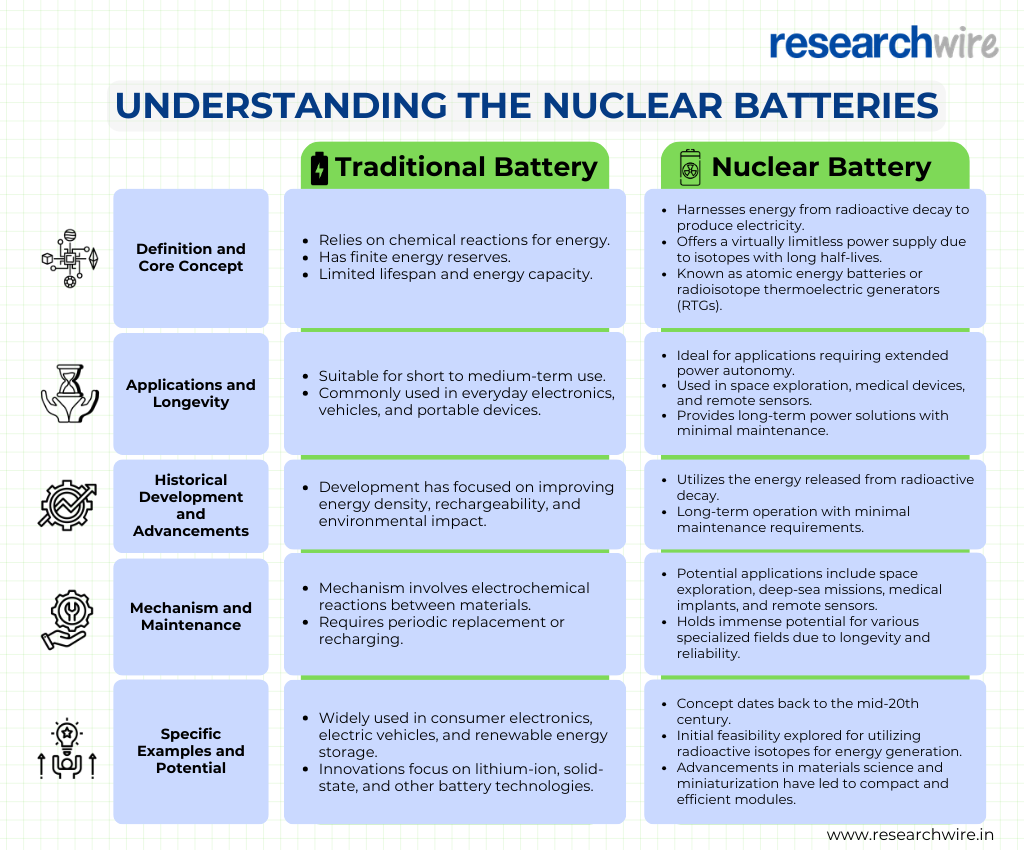Rohit Kumar is responsible for Researchwire European & North American business. He is an HEC, Paris 2008 MBA and Indian Institute of Technology (IIT) Kharagpur 2002 engineering graduate with close to 17 years of experience in business innovation and strategy, business development and client relationship roles. He is working with ResearchWire since 2016 and as a partner, is responsible for the growth of ResearchWire in Europe and North America.
Prior to ResearchWire, Rohit was handling sales strategy and pricing for Syniverse Technologies, a telecom services provider, where he was instrumental for growth in EMEA and India through product innovations, creative pricing and discounting models and executing strategic sales plans.
Rohit is based out of Luxembourg and has been living in Europe for last 12 years. He understands European & North American customers and their needs and ensures that our customers always have a local person to reach out whenever needed.
Introduction
In an era where energy demands are skyrocketing and environmental concerns loom large, the quest for efficient, sustainable power sources has reached a fever pitch. Amidst this fervour, a groundbreaking innovation has emerged: the nuclear battery. Promising decades-long power without the need for recharging or maintenance, nuclear batteries represent a paradigm shift in energy storage technology. However, behind this revolutionary advancement lies a complex web of patents and intellectual property (IP) considerations that shape its development, commercialization, and broader impact. In this article, we delve into the patent landscape of nuclear batteries, exploring the key players, technological advancements, and legal implications shaping this transformative field.
Understanding nuclear batteries
At its core, a nuclear battery harnesses the energy generated by radioactive decay to produce electricity. Unlike traditional batteries, which rely on chemical reactions and finite energy reserves, nuclear batteries offer a virtually limitless power supply by utilizing isotopes with long half-lives. This inherent longevity makes them particularly attractive for applications requiring extended power autonomy, such as space exploration, medical devices, and remote sensors.
 Nuclear batteries, also known as atomic energy batteries or radioisotope thermoelectric generators (RTGs), represent a revolutionary approach to energy storage and generation. Unlike traditional batteries that rely on chemical reactions, nuclear batteries harness the energy released from radioactive decay to produce electricity. This unique mechanism allows nuclear batteries to offer long-term power solutions with minimal maintenance requirements.
Nuclear batteries, also known as atomic energy batteries or radioisotope thermoelectric generators (RTGs), represent a revolutionary approach to energy storage and generation. Unlike traditional batteries that rely on chemical reactions, nuclear batteries harness the energy released from radioactive decay to produce electricity. This unique mechanism allows nuclear batteries to offer long-term power solutions with minimal maintenance requirements.
The concept of nuclear batteries dates to the mid-20th century when scientists explored the feasibility of utilizing radioactive isotopes for energy generation. Over the years, advancements in materials science and miniaturization techniques have enabled the development of compact and efficient nuclear battery modules. Today, nuclear batteries hold immense potential for various applications, ranging from space exploration and deep-sea missions to medical implants and remote sensors.
Potential Uses of Nuclear Battery
-
Planetary Probes and Deep Space Missions:
Planetary probes on lengthy journeys through deep space cannot be reliably powered by conventional chemical batteries or solar cells due to their limited lifespans and inconsistent power availability. Nuclear batteries, which convert the heat from decaying radioactive isotopes into electricity, provide a steady power supply over extended periods. This makes them ideal for deep space missions where long-term, consistent power is crucial for the operation of scientific instruments and communication systems.
-
Medical Implants:
Nuclear batteries have been historically used in medical devices like pacemakers. Their long lifespan and reliable power output make them suitable for implants that need to function without frequent replacement. Although concerns about radiation exposure have limited their use in consumer medical devices, advancements in safety measures, such as encapsulating radioactive materials, could revive their potential in medical applications where long-term power is essential.
-
Remote Sensors and Monitoring Equipment:
Nuclear batteries are excellent for powering sensors and monitoring equipment in remote or harsh environments where maintenance is difficult. For instance, they can be used in deep-sea research instruments, arctic weather stations, or seismic monitoring devices. Their ability to provide long-lasting, maintenance-free power makes them invaluable for applications in locations that are challenging to access and maintain.
-
Consumer Electronics:
Betavolt, a Chinese startup, has announced that it has developed a revolutionary battery capable of powering smartphones for an impressive 50 years without requiring recharging. Termed as the world’s first miniaturized atomic energy system, this nuclear battery utilizes 63 nuclear isotopes compactly arranged within a module smaller than a coin. This breakthrough opens the possibility of integrating nuclear batteries into consumer electronics like smartphones, providing a sustainable and long-lasting power solution for everyday devices. However, challenges related to safety and public perception regarding radiation exposure would need to be addressed before nuclear batteries could be widely adopted in consumer electronics.
These potential uses highlight the unique advantages of nuclear batteries in providing reliable, long-term power solutions for specialized applications.
Importance of intellectual property (IP) in the development and commercialization process
In the highly competitive landscape of energy technology, IP rights provide a strategic advantage by establishing barriers to entry for competitors and safeguarding against unauthorized use or replication of proprietary innovations. Furthermore, IP protection enables companies to leverage their technological advancements through licensing agreements, partnerships, and collaborative ventures, driving further innovation and market expansion. As the nuclear battery industry continues to evolve, robust IP strategies will be essential for fostering innovation, protecting investments, and ensuring sustainable growth in this dynamic sector.
With the global market for nuclear batteries projected to exhibit a CAGR of 8.6% from 2024 to 2029, securing patents is more critical than ever. Companies employ savvy strategies for filing and acquiring patents, racing to protect their technological advancements and gain a competitive edge. But it’s not just about hoarding patents; it’s about strategic alliances. Cross-licensing agreements and collaborative partnerships allow industry players to pool resources, accelerate innovation, and navigate the complex web of intellectual property rights. In this cutthroat landscape, those who master the art of patent protection and collaboration will emerge as leaders, driving the nuclear battery industry forward into a future powered by innovation and ingenuity.
Key Technological Innovations
The development of nuclear batteries has been characterized by incremental advancements in materials science, miniaturization techniques, and safety protocols. Early iterations of nuclear batteries, pioneered during the mid-20th century, were bulky and limited in functionality. However, recent breakthroughs have enabled the miniaturization of nuclear battery modules to sizes smaller than a coin, opening a myriad of new possibilities for integration into consumer electronics, IoT devices, and wearable technology.
One of the key technological innovations driving the evolution of nuclear batteries is the use of novel isotopic materials. Companies like Betavolt have leveraged advancements in nuclear engineering to optimize the efficiency and longevity of their batteries, using isotopes like nickel-63 to achieve unprecedented power outputs and lifespans. Additionally, advancements in encapsulation techniques and safety features have mitigated concerns surrounding radiation exposure and environmental impact, paving the way for widespread adoption of nuclear batteries across diverse industries.
Navigating the Patent Landscape: Patent Strategies
As with any disruptive technology, the development and commercialization of nuclear batteries are heavily influenced by patent rights and intellectual property considerations. Companies investing in nuclear battery research and development must navigate a complex landscape of existing patents, licensing agreements, and regulatory frameworks to protect their innovations and gain a competitive edge in the market.
ResearchWire can play a pivotal role in assisting companies and researchers involved in nuclear battery development with their patent strategies. Here’s how:
-
Patent Portfolio Development:
If you are a stakeholder in the nuclear battery technology sector looking to protect your innovations, understand the advantages of patents, learn how to file them, and estimate the cost and time involved, ResearchWire is your go-to resource. Patents safeguard your groundbreaking technologies, providing exclusive rights and a competitive edge. Filing a patent involves detailed documentation and legal processes. ResearchWire helps streamline this process, offering insights into the latest trends in nuclear battery technology to inform strategic decisions and develop robust patent portfolios.
-
Prior Art Search:
ResearchWire can perform thorough prior art searches to identify relevant patents, scientific literature, and technical documents. By conducting prior art searches, companies can ensure that their inventions are novel and non-obvious, reducing the risk of patent infringement and strengthening their patent applications.
-
Patent Monitoring:
ResearchWire can provide ongoing monitoring of patent activity in the nuclear battery field, alerting companies to new patents, patent applications, and patent infringement lawsuits. By staying informed about the latest developments in the patent landscape, companies can adapt their patent strategies accordingly and identify opportunities for collaboration or licensing.
-
Competitive Intelligence:
ResearchWire can gather intelligence on competitors’ patent portfolios, analysing their patent filings, technology trends, and innovation strategies. By understanding competitors’ strengths and weaknesses in the patent landscape, companies can identify potential licensing opportunities, anticipate competitive threats, and formulate effective patent strategies.
-
Collaboration Opportunities:
ResearchWire can facilitate collaboration opportunities between companies, research institutions, and industry stakeholders involved in nuclear battery development. By connecting innovators with complementary expertise and resources, ResearchWire can foster collaboration and innovation in the nuclear battery ecosystem, driving the advancement of sustainable energy solutions.
Legal and Regulatory Considerations
Despite the immense potential of nuclear batteries, their deployment is subject to stringent regulatory oversight and safety regulations to ensure public health and environmental protection. Regulatory agencies such as the Nuclear Regulatory Commission (NRC) in the United States and the International Atomic Energy Agency (IAEA) at the international level govern the licensing, manufacturing, and disposal of nuclear batteries, imposing strict compliance requirements on industry stakeholders.
Moreover, the proliferation of nuclear battery technology raises concerns regarding nuclear proliferation, security risks, and potential misuse of radioactive materials. As such, comprehensive risk assessment protocols, security measures, and containment strategies are essential to mitigate these risks and maintain public trust in the safety and viability of nuclear batteries as a sustainable energy solution.
The Road Ahead
The future of nuclear batteries appears promising, with continued advancements in materials science, manufacturing techniques, and regulatory frameworks driving innovation and market expansion. As global energy demands continue to rise and environmental pressures mount, nuclear batteries offer a compelling solution to address the dual challenges of power sustainability and energy autonomy.
Looking ahead, advancements in nanomaterials and innovative approaches, such as utilizing radioactive waste for energy generation, offer tantalizing prospects for enhancing the power density and sustainability of nuclear batteries. With continued research and development, nuclear batteries could emerge as key players in the transition towards decarbonization and the proliferation of renewable energy technologies.
However, realizing the full potential of nuclear batteries will require concerted efforts from industry stakeholders, policymakers, and regulatory bodies to overcome technological barriers, address safety concerns, and foster responsible innovation. By leveraging the collective expertise and resources of the global community, we can unlock the transformative power of nuclear batteries and usher in a new era of sustainable energy prosperity for generations to come.



